For those of you looking for flexible seating ideas for the classroom, we’ve got some to share! But, one of the most common concerns about setting up flexible classroom seating arrangements is the price! Finding inexpensive seating options that meet the needs of kids can be difficult. In place of pricy alternative seating ideas, why not try the frugal version and make a few DIY flexible seating ideas? Here are some ideas for adding sensory seating to the classroom with do-it-yourself versions of seating options to arrange a classroom for success!
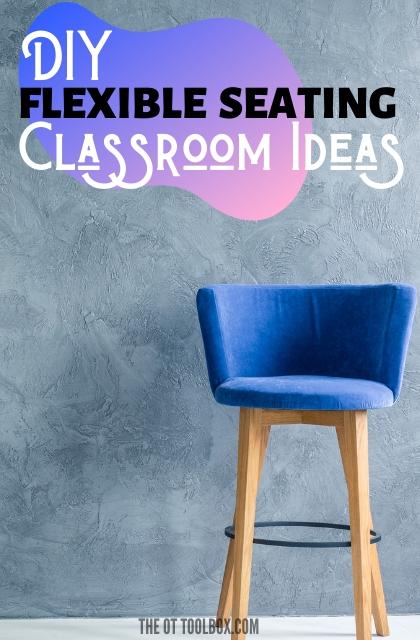
DIY Flexible Seating Ideas
Add some of these seating strategies to a classroom sensory diet, to meet sensory needs, or to help with self-regulation or attention issues. These classroom seating options can meet the needs of a single student or a group of students. From wobble seats, to therapy balls, to using a futon in the classroom, flexible seating looks like a lot of different things! The alternative seating options below are a do-it-yourself version.
Tire Seat- You may have seen DIY tire seats shown on Pinterest. Be sure to check out our Pinterest page of flexible seating options for some ideas and more options! One easy DIY tire seat tutorial is listed on A Life That We Built, which shows how to construct a tire seat as a seating idea for kids. This looks easy enough!
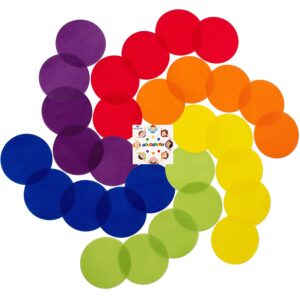
Circle Dots- Kids can really benefit from floor time! The versatility of moving colorful dots around the room as a seating option is perfect for the classroom that covers many needs. While these carpet dots are available commercially, what if you could frugally create your own version? Here’s the how-to:
- Grab a set of colorful felt sheets.
- Using a black marker, trace a dinner plate on each sheet of felt.
- Use your sharpest scissors and get to cutting.
- Done! Use those carpet dots to encourage movement, set up visual cues for seating, sort students into groups by colors, create in-classroom obstacle courses, and use as a visual seating spot for learning of all kinds!
Partially Deflated Beach Ball– Yes, a beach ball! We shared how and why this DIY seating option works in a past blog post. Using a beach ball as a cheap seating option is a great way to encourage the proprioceptive and vestibular input kids need.
Therapy Ball- A flexible seating option doesn’t need to be specified as a seat. Just like using a partially deflated beach ball described above, try adding more or less air to exercise balls aka a stability ball, yoga ball, or balance ball.
Chair or Couch Made from a Wooden Pallet– Use a couple of discarded pallets to create a small chair or bench. One tutorial is available on Funky Junk Interiors. This would make a nice reading space in a classroom or home.
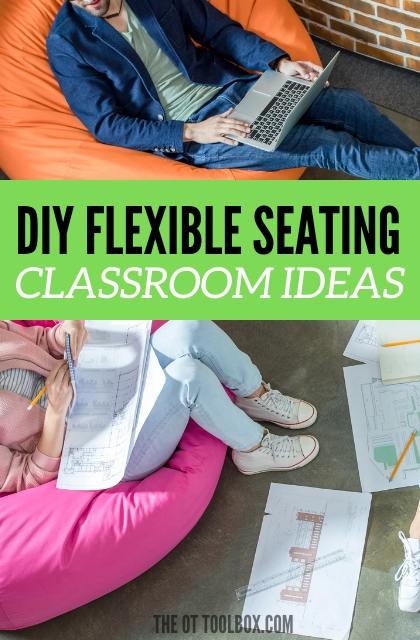
Milk Crate with Cushion- Use a milk crate, fabric, and foam to create a no-sew milk crate seat. These can be adjusted for students by adding softer or thicker foam, inflatable cushions, or other options. Really Good Teachers shares how to make no-sew milk crates easily and without pulling out the sewing machine!
Pillow Pile on Shag Carpet– Keep your eyes peeled for a sale on area rugs and especially for a shag carpet that’s on sale. A small cozy reading corner can be made using a shag rug and a pile of pillows. The shag seems to be a great fidget for some kids, too. Here is one option for a reasonable price.
Window Seat with Storage- Curling up with a book and some comfortable pillows sounds like a fun way to spend a little free reading time. Use a cube storage bench with pillows to create a flexible seating idea for the classroom or home. Store books or other materials in the cubes.
Cozy Corner Tent with Pillows- A calm-down space or cozy corner can be a part of the classroom’s flexible seating options or used as an area to meet specific sensory needs within the classroom. Some ideas for creating a cozy corner can include a teepee or tent, cardboard box, or even a fort structure with a sheet roof.
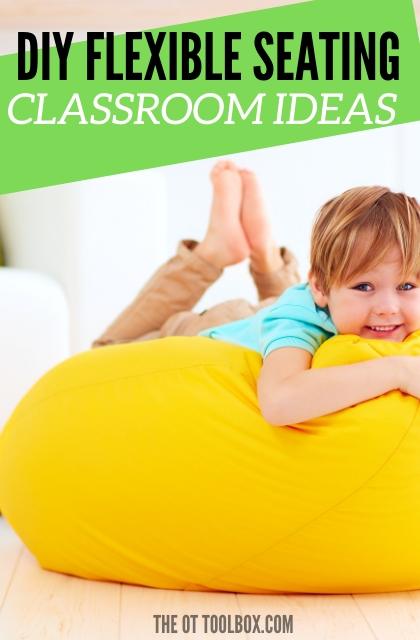
Lounge Cushions- Make your own lounge cushions by recycling old couch cushions or sewing up a sleeping bag. You can often times find cushions available on Facebook marketplace.
Carpet Scrap Placed Upside Down on Linoleum– This is a quick seating option that can help kids with the wiggles while providing a means of vestibular input The ability to scootch and slide the carpet square can be a movement break for some kids. Keep the carpet square “parked” in a designated spot when it’s needed and the child can keep their hands and feet still. This alternative seating option is a nice one for helping kids with personal space, too.
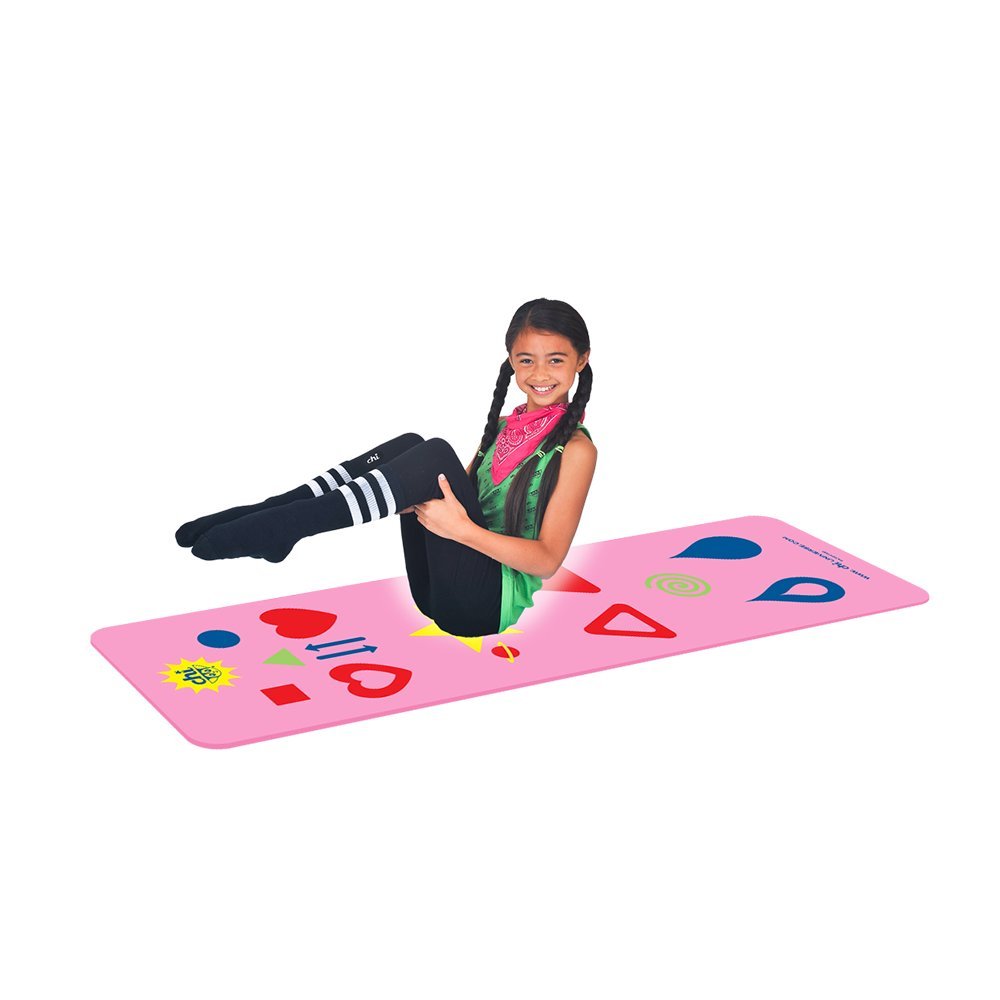
Yoga Mat– A yoga mat can be purchased fairly inexpensively and can be a nice way to provide movement in the classroom, both as a movement break, or even as a space to lounge while reading or completing group work. Yoga mats can be rolled up and stored in a closet or locker and pulled out for group yoga activities. While this isn’t a DIY seating idea specifically, you could use painter’s tape or electrical tape to create markings on the yoga mat for specific seating ideas to help with body awareness or marked spaces to sit and work.
Cardboard Box– Alternative seating strategies don’t need to be expensive! Use a large cardboard box either as a quiet space for reading or chilling, or as a seating option. Kids can get into a cozy box and read or complete a specific task. The walls of a cardboard box can muffle some distracting noises and can be a space to create or calm down. Add a string of Christmas lights for a sensory tunnel space or cave like we did in an old blog post.
Laundry Basket- Another inexpensive seating option, a laundry basket offers a cozy and small space for kids to calm down and focus on a task such as reading.
Soft Tent- There are so many options for play tents out there. Grab one or tow and make it a calm down space in the classroom that offers a quiet place to read, complete an assignment, or regroup. Kids can complete written assignments by using a small stool or lap tray to write on in the cozy sensory tent. They could also just chill and read in quiet by lounging on a bean bag or some pillows. Search pop-up kids indoor tent on Amazon to find lots of options.
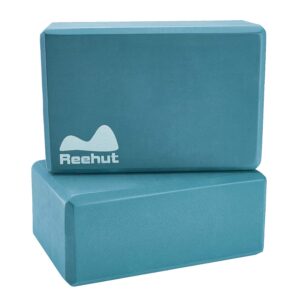
Foam Blocks- Yoga blocks can be used for so many different positioning needs. Use them to prop up feet to provide a foot rest for fidgeting or to get kids into a better posture for writing. The input through the feet can help kids with proprioceptive input that aligns their body for a better upright posture. Foam blocks could be used to prop up a clipboard to create a DIY slant board option, too. There are options on Amazon, but these can be found at discount stores like Five Below, too. To make a DIY version, use an old phone book with duct tape to create a sturdy block. Or, cut hard foam from packing materials and cover with tape.
Lowered Table and Kneeling- One nice option about some tables and desks is that they can be lowered with the help of the custodial staff at schools. The lower legs can be removed and placed into a cut tennis ball to creates a half-sized desk or table, Kids can then sit or kneel to work at the table surface, while getting some really great proprioceptive input in through their knees and legs.
Standing Table Surface- Other tables can be raised to create a standing surface. Kids can then stand to work in small groups or to complete short assignments. A pub-style table is a great surface as a standing table. This one is very nice for one or two students to work on a task.
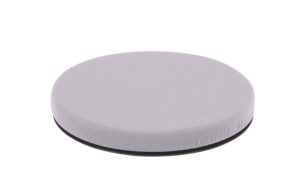
Swivel Seat- This is an alternative seating idea that provides much-needed sensory input for some kids. Think of a Lazy Susan and the spinning/rotation benefits that can occur. A swivel seat pad can provide that spinning or rotating vestibular input on any chair surface or even the floor. Kids can rotate their lower body to turn back and forth in their seats. I love this swivel seat option.
Flexible seating tips
What are your favorite DIY flexible seating ideas? Would any of these alternative seating ideas work in your classroom or home? Let me know in the comments below!


